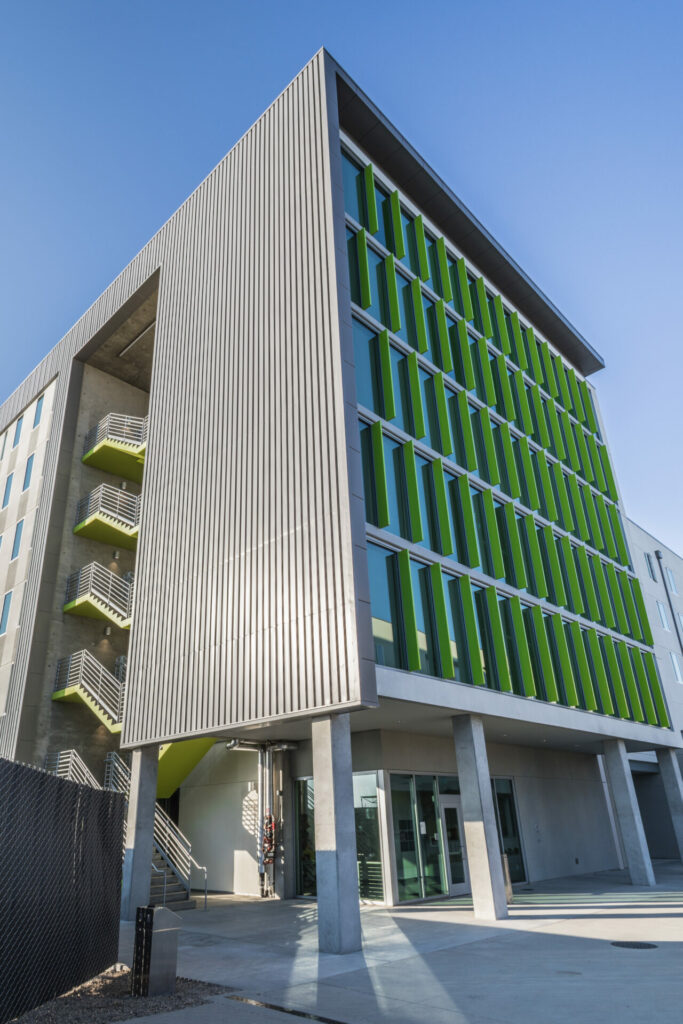
Mark Maxwell, LEED AP is the Director of Sustainability at the University of California, Merced
Nestled between the San Joaquin Valley and the Sierra Nevada Mountains, the University of California’s newest campus is a showcase of sustainability being named “The Greenest College Campus” by EcoWatch. UC Merced is the 10th campus in the University of California system and the first American research university of the 21st century. It opened in the fall of 2005 to 900 hundred students and now, almost 20 years later, home to almost 10,000.


Being “The Greenest College Campus” began from inception. Sustainability was embedded into the University of California’s newest campus by the first and late Chancellor Carol Tomlinson-Keasey who required all newly constructed buildings to be LEED Silver certified under the USGBC’s green building program. LEED (Leadership in Energy and Environmental Design) is the most prominent green building rating and certification system used throughout the world. This system rates buildings on their overall environmental performance in a checklist of sustainable design criteria.



After opening, the first 5 buildings were LEED certified, but it was no easy task, especially since LEED was a new program to the design and construction world for new construction. Certifying a building, means sustainable criteria needs to be embedded into programing and design. A LEED consultant and campus LEED coordinator were identified early in the design of these first buildings to insure they achieved LEED certification. Contracts with design teams and consultants had to incorporate LEED requirements along with contract and specifications with LEED requirements for the contractors as well. At the time, there were additional costs to incorporate LEED. This was a new program for building construction, so design teams and contractors were hiring their own LEED consultants to help support them. Because there was uncertainty amongst the contractors as well, with time requirements to manage LEED credits they also included money in their bids for LEED. Today we see little costs, since the buildings codes incorporate much of LEED’s requirements. Today building owners and constructors consider LEED as a design issue, not a cost issue.
Since LEED was going to be a campus-wide effort for all buildings, we started pursuing a new program within LEED that allowed you to use certain site credits that applied to all campus buildings and call them master site credits. With master site credits, once they are first approved, all campus buildings that pursue LEED certification on the campus would automatically achieve these credits. Some of these master site credits that our campus pursued included alternative transportation for public transportation access, low emitting fuel efficient vehicles, parking capacity, site development for protect and restore habitat and maximize open space, stormwater design for quality and quantity control, environmental tobacco smoke control, innovation design for building as a teaching tool, green cleaning and an assigned LEED Accredited professional on the campus. These were all approved under lead version 2.1, 2.2 and LEED 2009 for building design and construction.

LEED has created a living laboratory for a campus, giving students the opportunity to learn more about sustainable and environmental design which has created interest among students to certify the existing campus buildings under LEED operation and maintenance. In 2015, a LEED lab class was developed which allowed students to take an existing building, turn it into a project, and certify it under LEED operation and maintenance. Students were able to get real project experience on managing and implementing sustainable operations and features within the building and finding more energy efficient measures that could be implemented. Students were also able to work with multiple campus stakeholders on the operations of these buildings, including procurement, custodial, facilities, and landscaping, and learn from each other about potential sustainable operations, some of which were implemented into other buildings on our campus.

In addition to students, researchers on campus have been able to learn a lot from our sustainable built environment community on campus. Researchers have done a deep dive into energy-related and economic outcomes for LEED buildings in comparison to non-LEED buildings, and the results have shown that high-performing buildings are not just energy and water efficient and they create less carbon, but also that they are healthier, and their building occupants are much happier, which results in less absences and a better working environment.
We now have a new class on campus that prepares students to take the LEED GA exam, which is the first of two steps to become an Accredited LEED Professional. Our campus LEED buildings have been a major contributor to multiple awards and achieving carbon neutrality. In 2020, our campus was the first public research university in the nation and the first institution in the University of California system to achieve carbon neutrality.




